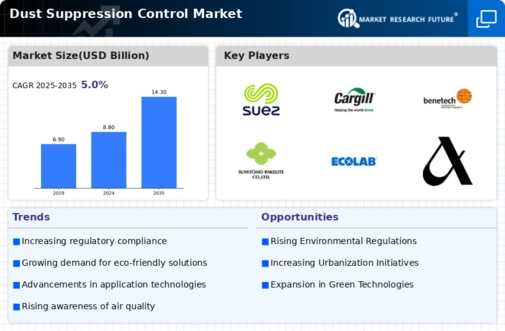Market Analysis
In-depth Analysis of Dust Suppression Control Market Industry Landscape
Moreover, stringent dust-emissions environmental regulations have a great impact on market dynamics. As air quality standards and regulations targeting particulates become increasingly strict across the various industries, there is insistent demand for reliable dust suppression control measures. Likewise, the market is intimately connected to industrial activity around the world. With industrialization deepening, particularly in industries such as mining, construction and manufacturing requiring dust suppression products. There is a huge growth potential for the market. The health and safety of workers, as well as communities near industrial plants influence market forces. Dust itself represents a respiratory and health hazard. Industries therefore invest in dust prevention control measures to reduce risks, as well as compliance with occupational health standards. On-going technological changes in dust suppression add to market dynamics. Innovations in misting systems, dust control agents and equipment efficiency all increase the effectiveness of suppressive techniques. This means industries can find more dependable ways to resolve their problems with dusty elements. The mining industry has an important role in determining market structure. Dust from mining operations affects air quality and its surrounding ecosystems. Responsible and sustainable mining operations require effective dust suppression control measures. The presence of water resources affects market behavior. Water-based solutions are traditional dust suppression methods. But fears about water shortages in some areas compel development of substitute dust suppression techniques which consume less. Global economic conditions influence market dynamics. Economic downturns directly affects industrial activities and construction projects, which in turn reduces the need for dust suppression control solutions. On the other hand, economic activity spurs investment in dust control. The development of sustainable practice affects market dynamics. As industries begin to more and more mesh with the sustainable development goals, demand for environmentally friendly dust suppression devices that have a low ecological impact has increased. Dynamics of the market come from customization and integration. Service providers providing customized dust suppression solutions and integration services that meet the needs of various industries as well as different operational conditions are going to win in this market.


 Source: Secondary Research, Primary Research, Market Research Future Database and Analyst Review
Source: Secondary Research, Primary Research, Market Research Future Database and Analyst Review






Leave a Comment